Affiliate links on Android Authority may earn us a commission. Learn more.
Camera shootout: Samsung Galaxy S20 Ultra vs Apple iPhone 11 Pro Max
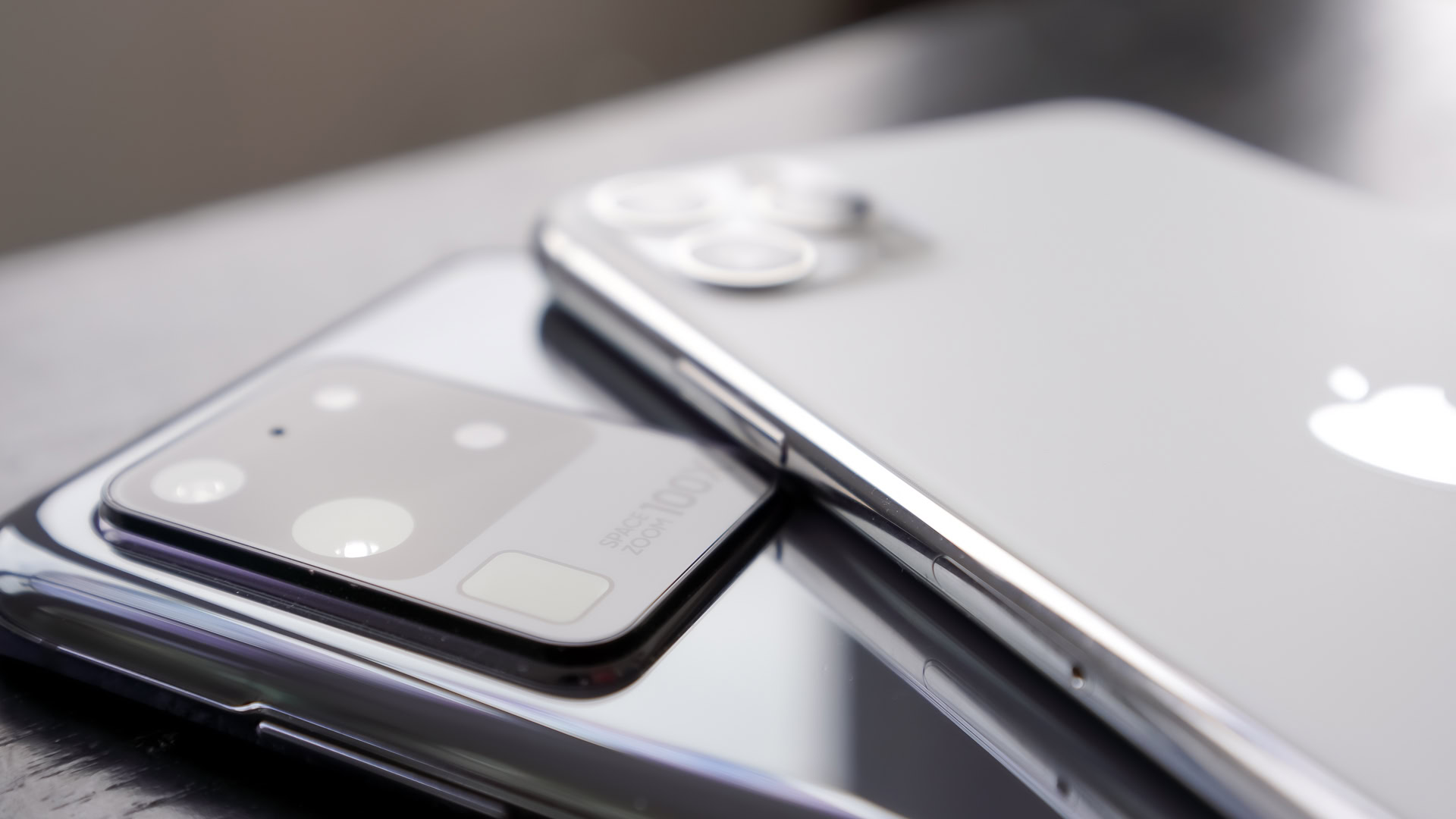
Last fall, Apple came out swinging with the iPhone 11 Pro Max. The fruit company’s latest flagship has an advanced triple-camera system meant to provide users with the ultimate mobile photography experience. Samsung rose to meet the challenge with its Galaxy S20 series, and the Galaxy S20 Ultra in particular. This new phone boasts one of the most capable multi-camera systems in the market. Is one better than the other? Find out in our Galaxy S20 Ultra vs iPhone 11 Pro Max camera shootout.
Read: Samsung Galaxy S20 Buyers Guide – Everything You Need to Know
Note: All the sample photos in our article have been resized for display purposes. Full-resolution samples are available here.
Samsung Galaxy S20 Ultra vs iPhone 11 Pro Max: Specs
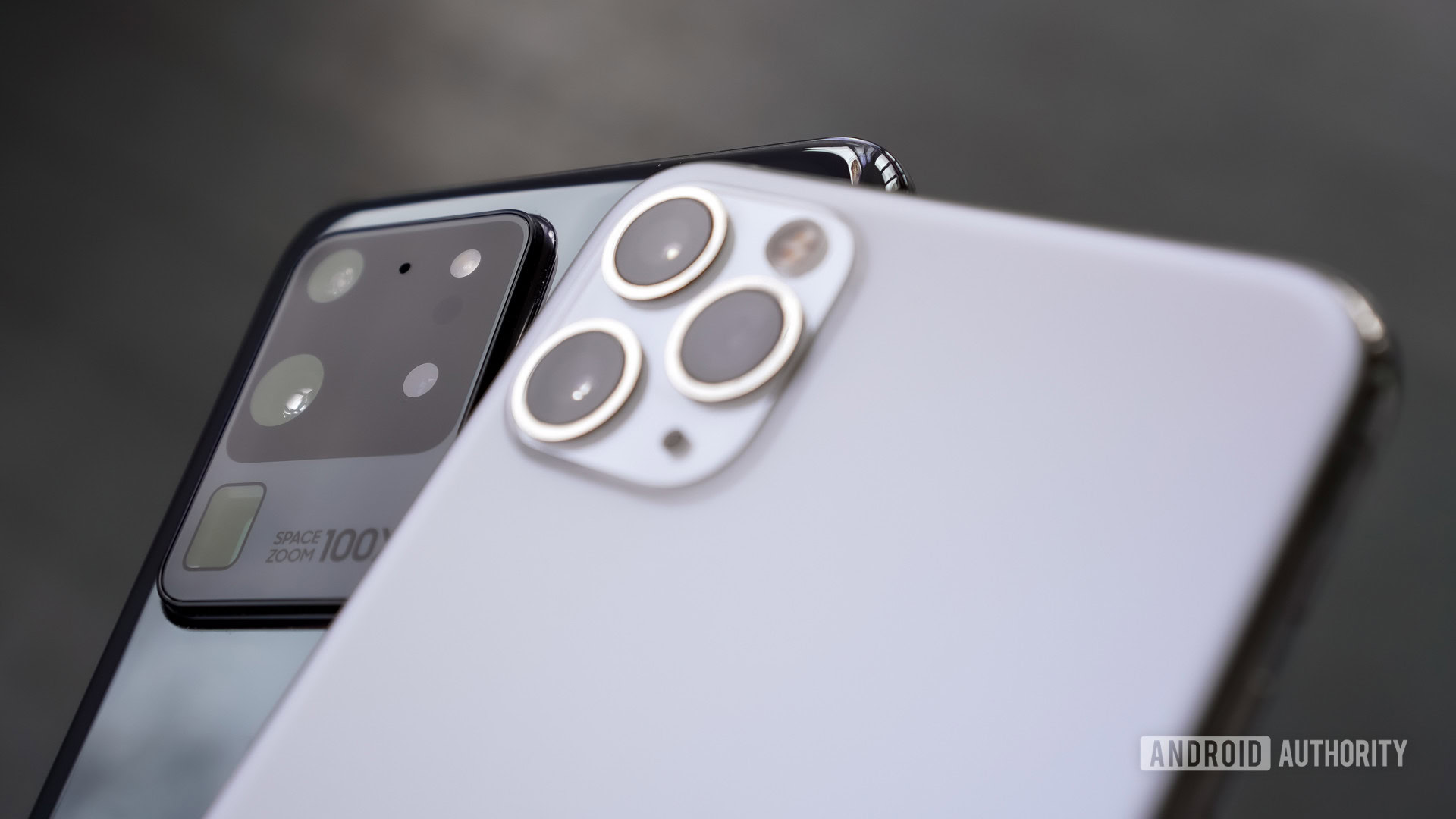
Before we dive into the photos, let’s take a gander at the hardware. Each device has a complex system stuck on the back, with myriad cameras working together to produce results.
The Galaxy S20 Ultra’s main shooter captures 108MP at f/1.8. Of note: it has a really large 1/1.33 sensor, which lets it capture a lot of light. This is what powers its nighttime features. Shots taken with this camera are binned down by a factor of nine (nona-binning) to 12MP each, but the full resolution is available with the press of a button. The telephoto camera snaps 48MP shots at f/3.5, the ultra-wide snaps 12MP shots at f/2.2, and the selfie camera snaps 40MP shots (binned to 10MP) at f/2.2. A time-of-flight (ToF) sensor helps with depth information. That’s a lot of sensors and lenses.
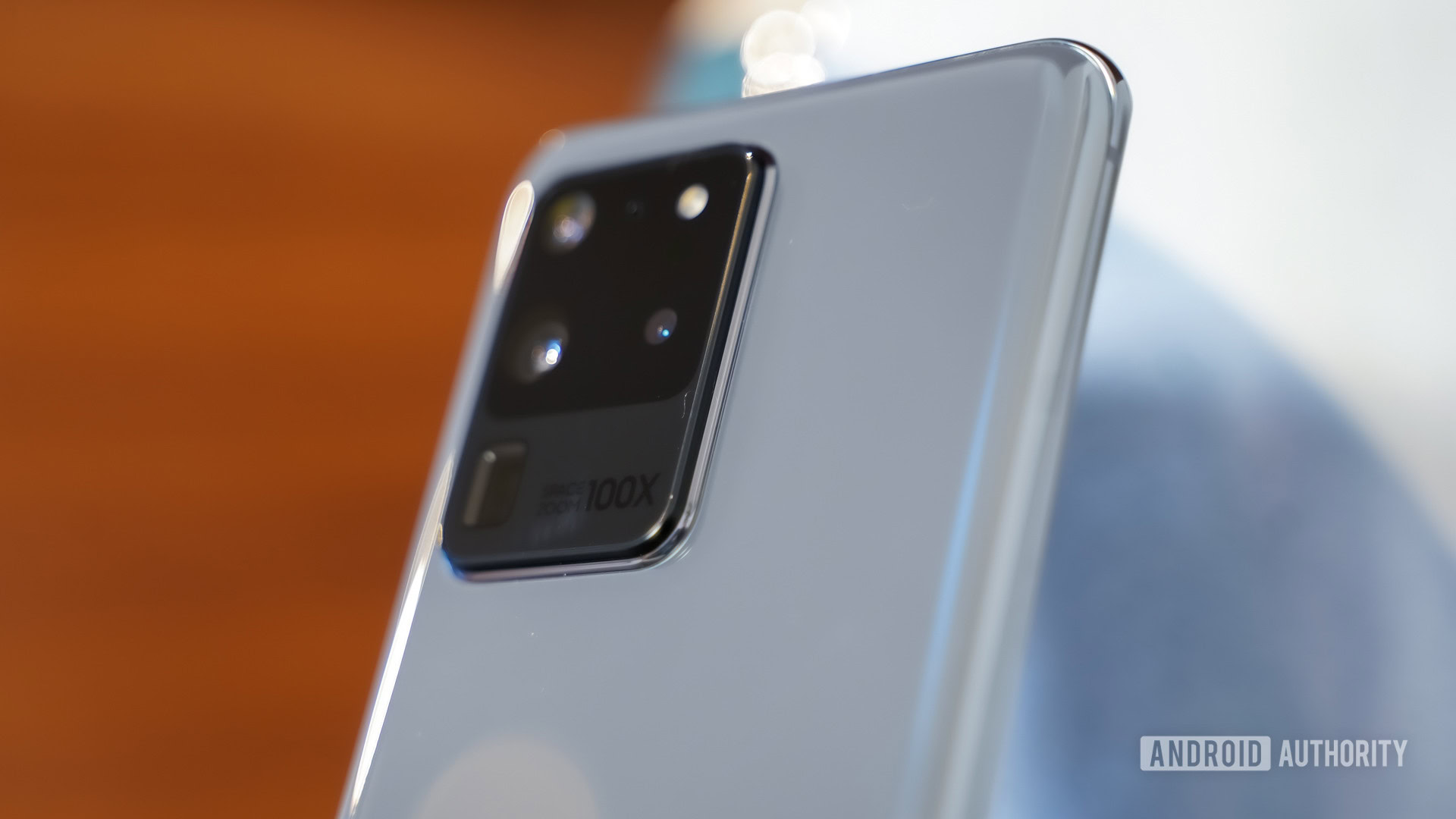
Apple’s approach is similar though not quite the same. The iPhone 11 Pro Max has a three-camera setup on the rear. Apple opted for three 12MP sensors for the ultra-wide, standard, and telephoto cameras. The ultra-wide enjoys an aperture of f/2.4 and a 120-degree field of view, while the standard camera has an aperture of f/1.8, and the 2x optical zoom telephoto offers an aperture of f/2.0. These are joined by a 12MP selfie camera at f/2.2. Apple does not use a ToF sensor, nor does it use pixel-binning.
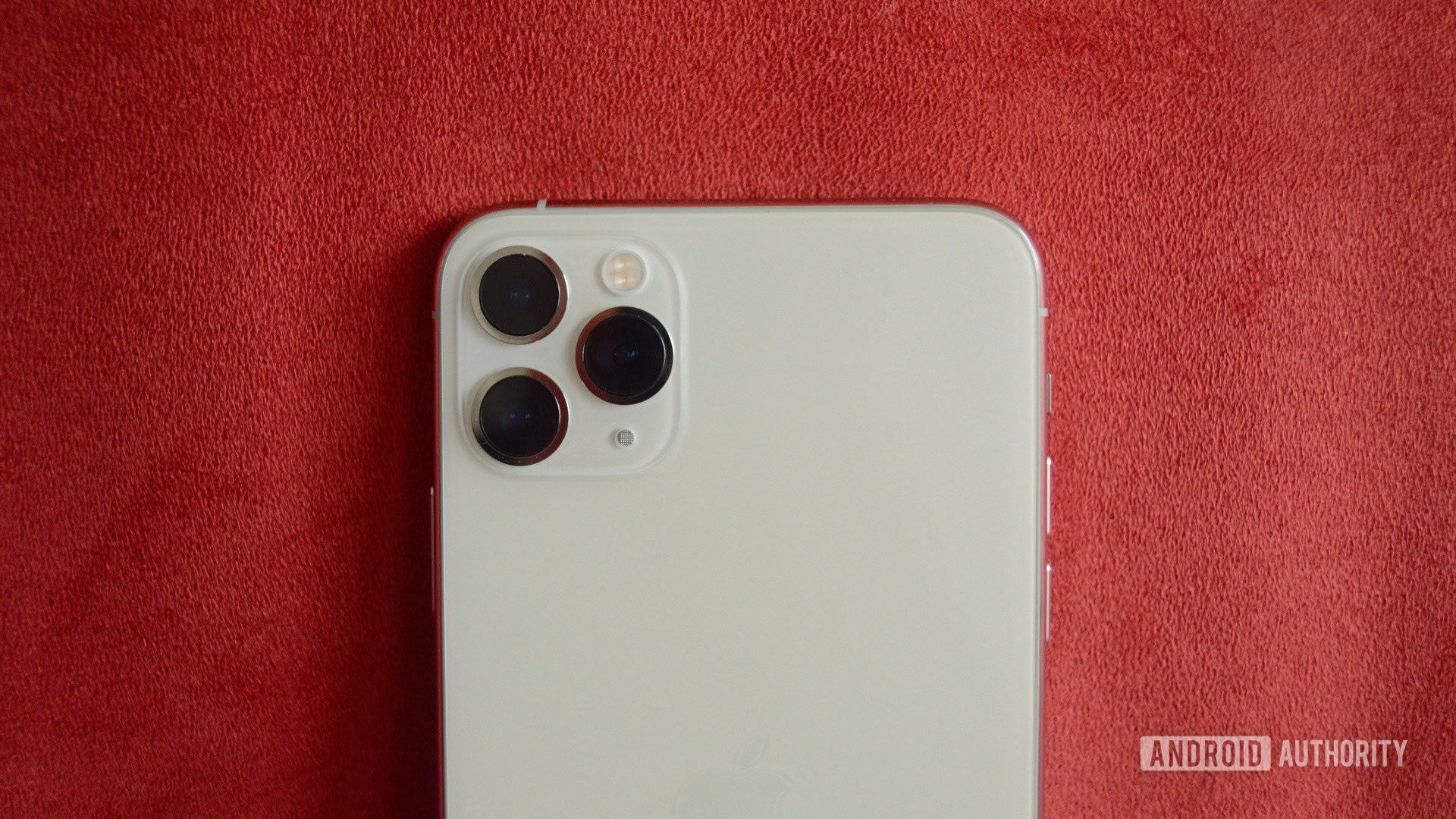
Samsung and Apple rely on entirely different processing platforms. The S20 Ultra, for example, relies on the Snapdragon 865 system-on-a-chip. The 865 provides a range of advanced imaging tools, including machine learning and a dedicated image signal processor. Apple, on the other hand, uses its home-grown A13 Bionic chip with a third-generation neural engine.
Pitting the performance of these two processors head to head is not exactly an (ahem) apples-to-apples comparison, so we’re not going to deliver a verdict here. We do know, however, that the Snapdragon 865 bested the A13 on some benchmarks.
See also: Samsung Galaxy S20 Ultra review | Apple iPhone 11 Pro Max review
Samsung Galaxy S20 Ultra vs iPhone 11 Pro Max: Apps and features
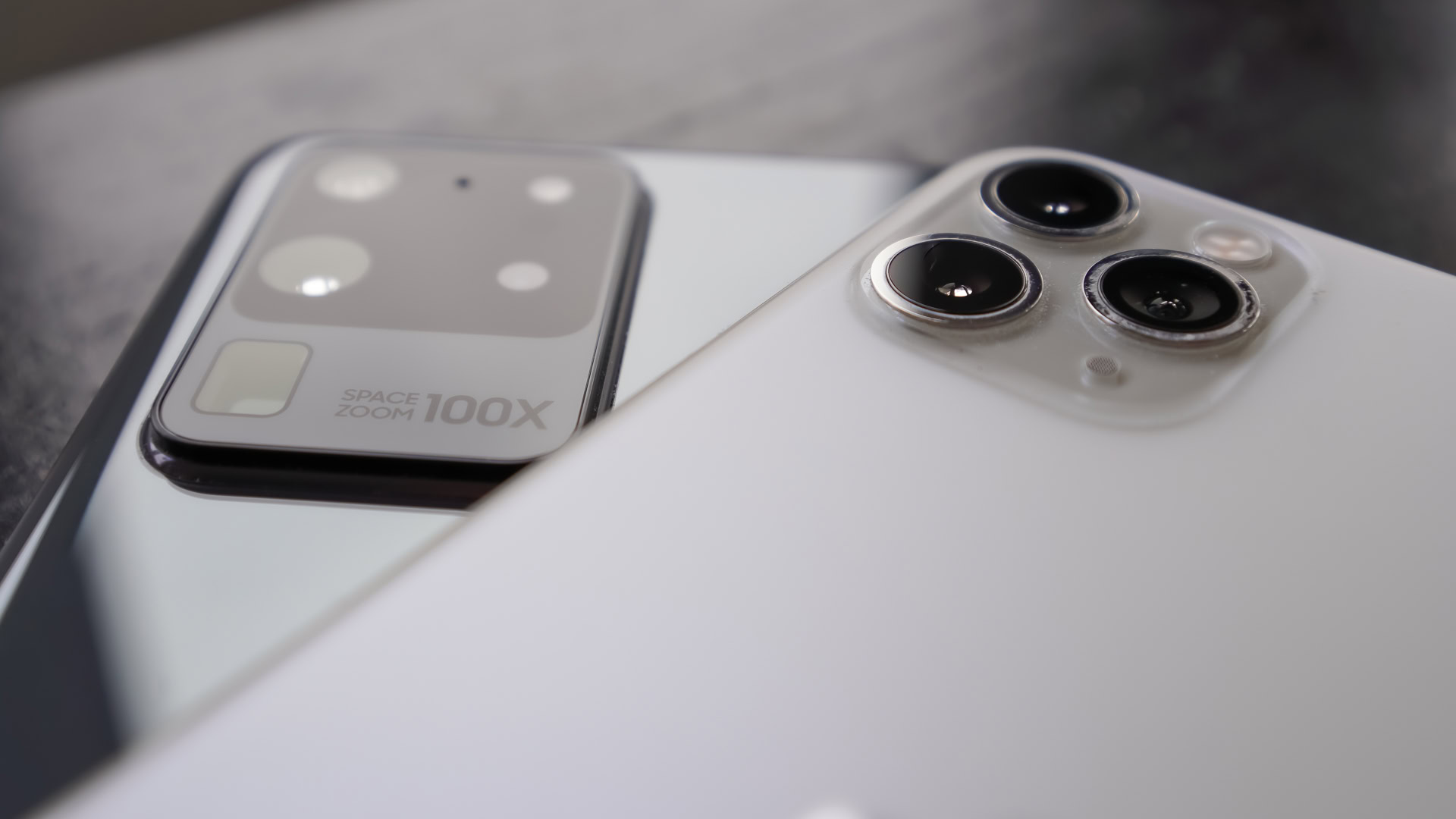
Specs are important at determining the results, but the software is often doing most of the work. How are the camera apps from Samsung and Apple?
Both Samsung and Apple have straight-forward camera applications that make it a breeze to find and use features. A double-press of the power button launches the camera app of the S20 Ultra, but there’s no way to truly rapidly launch the iPhone camera app. The best you can do is wake the screen and tap the camera shortcut on the lock screen. I wish Apple had a speedier method.
Samsung simplified its camera UI recently in One UI 2.0. The shutter button is located prominently, with camera modes and zoom tools nearby. I like that Samsung makes certain controls (flash, timer, aspect ratio, etc.) a breeze to adjust with a few quick taps. Shooting modes include photo, video, Single Take, pro, panorama, food, night, live focus (portrait), live focus video, pro video, super slow-mo, slow-mo, and hyperlapse.
The most significant mode is Single Take, which records up to 10 seconds of video and then automatically generates up to nine different photo/video file types for sharing.
Apple has long offered a dead-simple camera app to iPhone users. The main viewfinder offers easy access to the wide-angle, standard, and 2x telephoto lenses, as well as the bevy of shooting modes. These include photo, video, time-lapse, slow-mo, portrait, and panorama. The far side of the viewfinder is where you’ll find buttons for the flash, live photos, and the timer.
While the Samsung app has more overall features, the Apple app is a touch easier to use. With these in mind, we’ll call the Galaxy S20 Ultra vs iPhone 11 Pro Max camera app comparison a draw.
Winner: Tie
Samsung Galaxy S20 Ultra vs iPhone 11 Pro Max: Camera shootout
Daylight
Daylight shots are where every camera should shine. There’s not a lot of greenery around just yet, but I did take the Galaxy S20 Ultra vs iPhone 11 Pro Max comparison outdoors to see what’s what.
In these shots, you’ll see blue skies, brown trees, gray gravel, and lots of contrast. In fact, the iPhone shots are over contrast-y if you ask me. The S20 Ultra shots have less contrast but also a touch less color. In this series, I prefer the S20’s results over the iPhone’s, particularly because they are more in line with what my eyes saw when I took the pictures.
Winner: Galaxy S20 Ultra
Detail
The amount of detail visible in these photos depends almost entirely on the exposure. For example, the S20 used a brighter exposure and thus lost some detail. In other instances, the S20’s brighter shot retains detail where the iPhone’s darker shot did not. More importantly, when you zoom in on these photos, the level of visible detail in the gravel and wood grain is about even. There’s no clear winner in this category.
Winner: Tie
Portrait/selfie
The Galaxy S20 Ultra has a time-of-flight sensor, which should help to take superior portraits, right? This isn’t necessarily the case.
As you can see in the samples here, the S20 was able to define me from the background very well, with a few rough edges here and there (look at my coat sleeve). The background is properly exposed, but my face looks overly pink. Worse, I’m not entirely in focus.
The iPhone did a slightly better job. My coat sleeve is smoother along the edges, and my face is much sharper. More to the point, color is a tad more accurate and there’s more detail in the background and foreground. Last, my face isn’t over-beautified.
As for selfies, the S20 messes up in a few ways. First, it mirrors the scene, meaning everything is backwards (you can see the reversed text on my jacket). You have to dive into the selfie camera settings to switch this. Second, the S20 smoothes over my skin a bit too much. The iPhone simply delivers here, whether it’s focus, color, bokeh effect, or temperature.
Again, it’s only by a hair, but I’m going with the iPhone this time around.
Color
In my experience, the Apple iPhone has always had an issue properly processing colors. Apple’s algorithms often generate a t00-warm cast to photos that isn’t necessarily accurate to the scene at hand. The iPhone 11 Pro Max still does this to some degree, but the effect isn’t nearly as pronounced as it used to be. That’s good news for the iPhone.
In these samples, the iPhone’s exposures are a touch darker than the Samsung’s. This allowed them to retain more detail and deliver richer hues. It’s very close, but I think the iPhone has the better balance of exposure and detail here. It’s particularly pronounced in the grain of the wood. Samsung is often known for over-saturating colors, but in these samples the colors come off as a little flat. I’m calling the iPhone the winner here, but only by a hair.
Winner: iPhone 11 Pro Max
HDR
HDR is meant to help balance out the light and dark parts of any given scene. In the sample here, I shot the underside of a bridge with the sun overhead. It’s challenging, given the reflectivity of the river on both sides. The Galaxy S20 Ultra nailed it the first time. It’s not perfect — some detail is missing in the underbelly of the bridge — but it’s very good. More importantly, the sky is blue, and the surrounding vegetation is properly exposed. It took the iPhone three tries to get this shot right (it blow out the sky on the first two attempts), and even then it still loses too much of the bridge to the shadows.
Samsung’s flagship delivers the better HDR shot.
Winner: Galaxy S20 Ultra
Low light
This is a tough one. In the sample above, the S20 got everything just right. It captured the tone and color of the sky without under- or over-doing it. The iPhone simply didn’t get it right. Focus is really soft, which makes the clouds look more like a painting than a photo.
In the shots below, however, I think the reverse is true. The S20 blows out some details that the iPhone is able to keep. Moreover, the color is a bit richer in the iPhone shot and the focus is a touch sharper. This one is too close to call.
Winner: Tie
Night mode
Both the S20 Ultra and iPhone 11 have night modes that are meant to really deliver in darker environments. In this shot, there was almost no light at all, and yet both phones managed to find enough to flesh out the scene. I think the color looks a bit more natural in the S20 Ultra shot, while it skews too warm in the iPhone shot. The S20 image is also sharper and less noisy. I’m giving this one to the S20.
Winner: Galaxy S20 Ultra
Wide/zoom
Let’s talk about zoom for just a second. The S20 Ultra’s main selling point is absurd levels of zoom. The device has an ultra wide-angle camera that delivers 0.5x zoom, in addition to offering 1x, 2x, 4x, 5x, 10x, 30x, and, yes, even 100x zoom. Samsung’s S20 Ultra does this by blending its up-to-4x optical zoom telephoto lens with digital cropping of the 48MP sensor to reach the 100x claim. You can see in the samples below just how effective this really is.
Apple adopted this triple-threat approach to imaging as well. The iPhone 11 Pro Max has its own ultra-wide and telephoto cameras, though it is more limited. The iPhone’s zoom is capable of 2x optical and up to 10x hybrid optical and digital crop.
The S20 Ultra’s ultra-wide shots look very good, with solid color tone and good focus. By way of comparison, the iPhone’s shots look a bit washed out and flat. Similarly, the S20 delivers quite good 10x zoomed shots, while the iPhone’s max range of 10x zoom comes across as soft and more like a painting than a photograph. Toss in the S20 Ultra’s 30x and 100x zoom range (limited though it may be), and it’s clear which device wins this round.
Winner: Galaxy S20 Ultra
Galaxy S20 Ultra vs iPhone 11 Pro Max: Which wins?
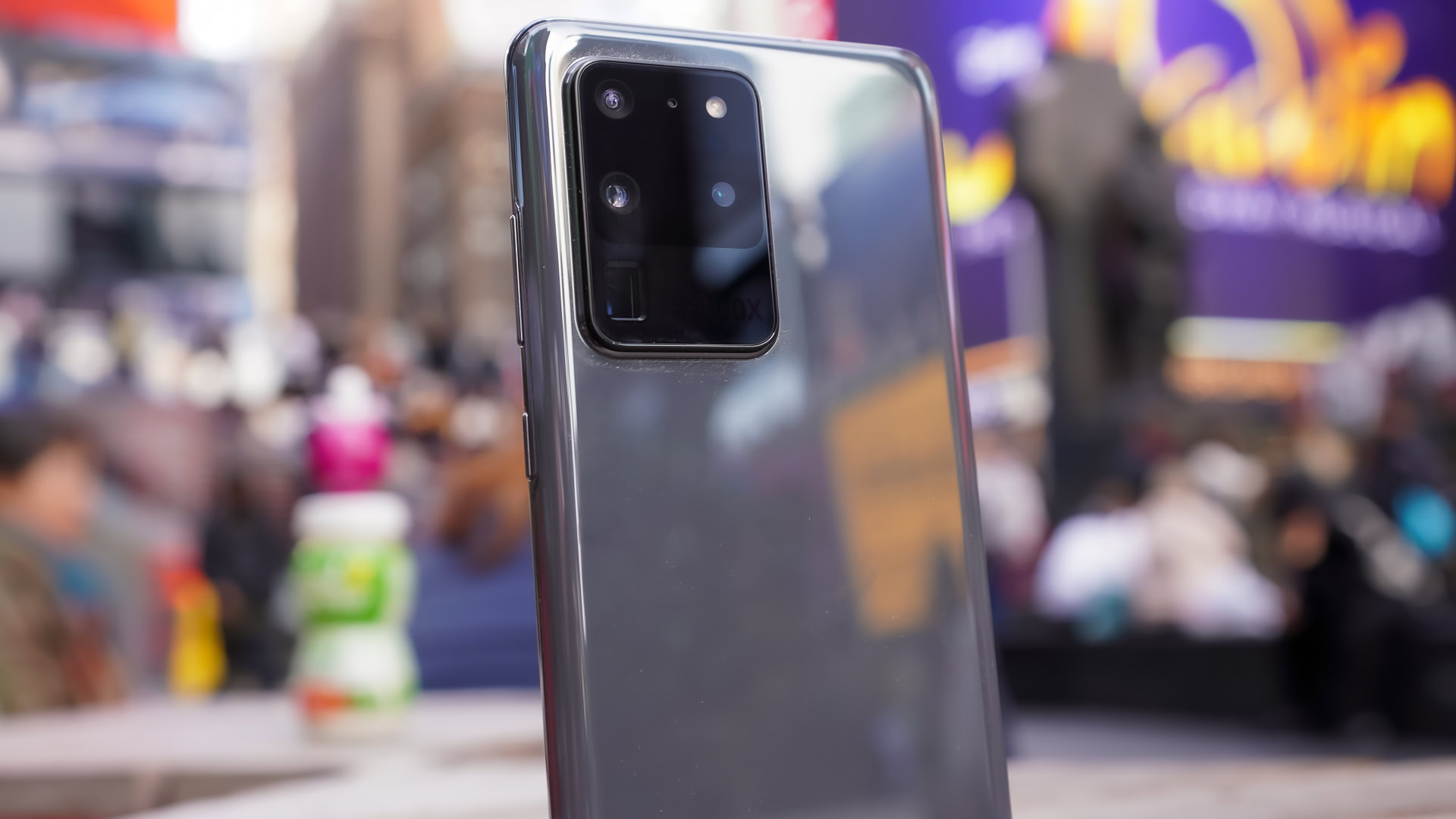
Based on the sample shots I was able to capture for this article, I’m going to call the Samsung Galaxy S20 Ultra the winner, but just by a nose. Some will surely prefer the warmer look to shots captured by the iPhone, and Apple’s device clearly takes excellent pictures in varying scenes and scenarios. I think the S20 Ultra edges out the iPhone 11 Pro Max due to its more flexible zoom range, better night mode, HDR, and daylight shooting. Yes, the iPhone does better with color and portraits, but not by much.
This concludes our Galaxy S20 Ultra vs iPhone 11 Pro Max camera comparison. What do you think? Did we get it right? Please feel free to share your opinions in the comments below, and be sure to check out our S20 Ultra vs Pixel 4 XL camera shootout as well.